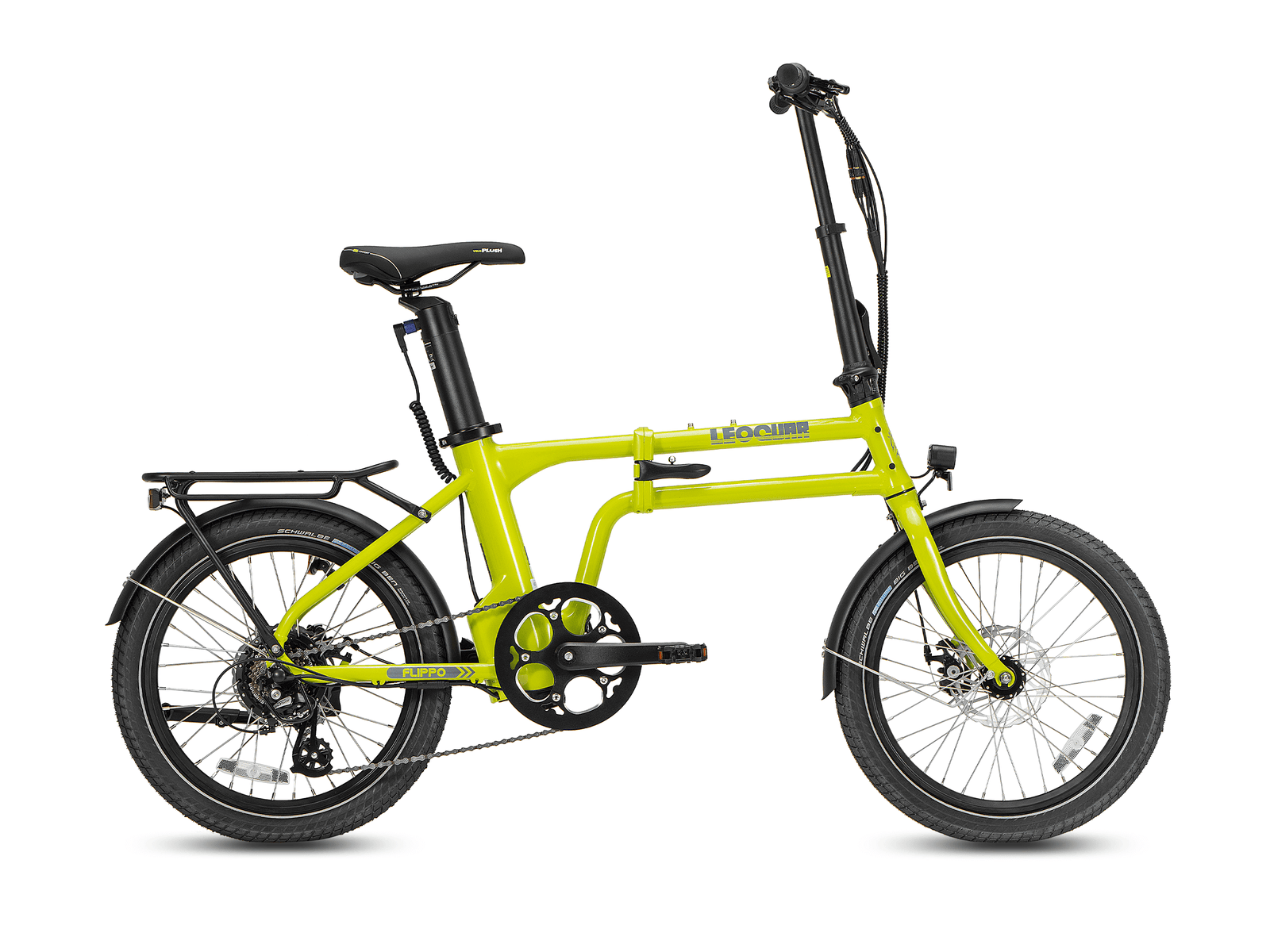
Why Buy an Electric Bike? 7 Real Benefits You Need
More Freedom, More Fun
So, why buy an electric bike? The short answer is that an e-bike gives you more power. It's not about cheating or taking the easy way out; it's about making your own power stronger to break down the things that keep you from riding a bike more often. An e-bike makes cycling easier to do, more useful, and more fun for almost everyone.
We see the e-bike advantage resting on three main ideas:
- Accessibility: It makes hills flat, beats long distances, and makes your fitness level a starting point, not something that stops you.
- Practicality: It changes daily travel, turning stressful trips to work and boring errands into smooth, enjoyable rides.
- Enjoyment: It helps you find again the simple joy of being on two wheels, removing things like wind, tiredness, and hard terrain.
This guide will look at these benefits closely, giving you the clarity you need to decide if an e-bike is the right choice for your life.
The Four Pillars
The fast rise of electric bikes isn't a short trend; it's a transportation change built on four powerful benefits that work with modern life. Let's break down why so many people are making the switch.
Health & Fitness Redefined
The myth that e-bikes are not exercise has been proven wrong. An e-bike gives you meaningful, low-impact heart activity that's easier on your joints than running. The key is the pedal-assist system: you still have to pedal, but the motor gives you a boost, helping you keep a steady effort. In fact, recent studies show that e-bike riders can get big fitness improvements, often because the help encourages them to ride more often and for longer distances than they would on a regular bike. This consistency is the true secret to better health. Beyond physical benefits, swapping a stressful car trip for a ride in fresh air greatly reduces stress and improves mental well-being.
Financial & Economic Savings
While the first purchase price of an e-bike is higher than a traditional bicycle, it represents a big long-term investment that can pay for itself. When you replace car trips with e-bike rides, the savings add up quickly. You spend less on gas, don't pay for parking, and face lower insurance and maintenance costs. For many, an e-bike can even replace the need for a second family car, leading to thousands of dollars in yearly savings.
| Annual Cost Comparison | Average Car | E-Bike |
|---|---|---|
| Fuel/Energy | ~$1,500 - $2,500 | ~$20 - $50 |
| Insurance | ~$1,200 | ~$0 (or small rider on home policy) |
| Maintenance | ~$800 | ~$150 - $250 |
| Parking | ~$0 - $2,000+ (city dependent) | ~$0 |
| Total Estimated Annual Cost | ~$3,500 - $6,500+ | ~$170 - $300 |
Environmental Impact
Choosing an e-bike is a practical, personal step towards a more sustainable lifestyle. E-bikes are zero-emissions vehicles that contribute much less pollution per mile than cars or motorcycles. By replacing short car trips—which are often the most wasteful—you directly reduce your carbon footprint and help improve local air quality. In a world increasingly focused on climate solutions, the e-bike stands out as a simple, effective, and enjoyable way for a person to make a real difference every single day.
Unmatched Convenience
This is where the e-bike truly shines in daily life. It beats the commute by making hills flat, allowing you to keep speed without getting tired, and letting you arrive at your destination feeling energized, not covered in sweat. It lets you bypass traffic jams by using bike lanes and shortcuts. Modern cargo e-bikes are built to haul, able to carry hundreds of pounds of groceries, packages, or even children, making them a real car replacement for many families. The help also gives you the confidence to explore further, turning a 10-mile ride into an easy adventure and opening up new parts of your city.

A Tale of Two Commutes
To understand the real-world impact of an e-bike, let's look at a typical day through the eyes of a commuter we'll call Alex.
Monday Morning: The Car Commute
Alex's alarm goes off at 6:45 a.m. The goal is to be at the office, nine miles away, by 8:30. After a rushed coffee, Alex gets into the car at 7:30. The first ten minutes are fine, but then the brake lights appear. It's the usual bottleneck. The radio talks about accidents and delays. Stress levels rise with every minute spent moving forward slowly. Alex finally arrives downtown at 8:20, but the hunt for parking begins. After driving around for ten minutes and finding a spot six blocks away, it's a fast, frustrating walk to the office. Alex walks in the door at 8:38, slightly late, already feeling drained and having spent money on gas and parking. The day has barely begun, and it already feels like a struggle.
Tuesday Morning: The E-Bike Commute
Alex's alarm goes off at 7:15 a.m. After a more relaxed coffee, Alex hops on the e-bike at 7:50. The morning air feels crisp and refreshing. Instead of joining the line of cars, Alex cruises down the bike lane, gliding past the traffic jam. The first big hill on the route, usually a scary challenge, is now a gentle climb thanks to the pedal-assist. It's still a workout—Alex's heart rate is up—but it's manageable and even enjoyable. The ride is engaging, a time to watch the city waking up rather than staring at the bumper ahead. Alex pulls right up to the office building at 8:25, locks the bike to the rack by the front door, and walks in feeling energized, clear-headed, and on time.
The Debrief
The difference is not just about time or money; it's about the quality of life.
| Metric | Car Commute | E-Bike Commute |
|---|---|---|
| Total Time | ~68 minutes | ~35 minutes |
| Direct Cost | ~$5 (Gas + Parking) | ~$0.05 (Electricity) |
| Stress Level | High | Low |
| Health Benefit | None (Negative) | Positive (Moderate cardio) |
| Enjoyment | Low | High |
Is an E-Bike Right for YOU?
Now that we've explored why buy an electric bike, let's figure out which type is your perfect match. The best e-bike is the one that fits your life. We've created a simple framework to guide you from general interest to a specific choice.
Step 1: Define Your Primary Use
Start by identifying what you'll use the bike for most often. This single step will narrow down your options a lot. Check all that apply to you:
- Daily Commuting (under 15 miles)
- Long-Distance Touring or Exploring
- Fitness & Recreation on Paved Paths
- Hauling Cargo (groceries, kids, equipment)
- Off-Road Adventures on Trails
- General Mobility Assistance
Step 2: Match Your Use to an E-Bike Type
Your primary use case points directly to a category of e-bike. Matching the bike type to your goal is the most important part of the process.
-
Daily Commuting or Fitness → Commuter/Hybrid E-Bike
Balanced comfort, efficiency, and upright riding position. -
Hauling Cargo → Cargo E-Bike
With extended rear racks (long-tails) or large front buckets, these are the minivans of the bike world. -
Commuting with Limited Storage → Folding E-Bike
Perfect for apartments, offices, or combining rides with public transit. -
Off-Road Adventures → E-MTB (Electric Mountain Bike)
Strong frame, suspension, and knobby tires make it ideal for trails.
Step 3: Key Features to Consider
Once you know your type, focus on these three technical details:
-
Motor
- Mid-drive motors: Located at the pedals, excellent for hilly terrain, provide a natural ride.
- Hub-drive motors: Located in the wheel (usually rear), solid choice for flatter commutes.
-
Battery
- Capacity is measured in Watt-hours (Wh).
- 400–500Wh: Plenty for daily commutes.
- 600Wh or more: Better for longer-distance riders.
-
Class (important for legal and safe riding)
- Class 1: Pedal-assist only, up to 20 mph.
- Class 2: Has a throttle, can be propelled without pedaling, up to 20 mph.
- Class 3: Pedal-assist only, up to 28 mph.
👉 Check your local laws to see which classes are permitted on bike paths versus roads.
The Honest Truth
To build trust, we believe in transparency. An e-bike is a fantastic solution for many, but it's important to consider the potential downsides to ensure it's the right choice for you.
- Initial Cost: There's no getting around it—a quality e-bike is a big upfront investment, typically starting around $1,500 and going up from there. It's important to view this not as a simple purchase but as an investment that pays you back over time through savings on transportation.
- Weight: E-bikes are much heavier than their non-electric counterparts, often weighing 50-70 pounds. This can be a major factor if you live in a walk-up apartment or plan to transport the bike on a car rack. Always test the weight at a shop before you buy.
- Maintenance & Battery Care: While not overly complex, e-bike maintenance can be more specialized. The motor and battery systems are best serviced by a qualified technician. The battery, the most expensive component, also requires care. For best longevity, try to keep its charge level between 20% and 80% and store it at room temperature.
- Regulations & Safety: The rules for e-bikes are still evolving and can vary by city and state. It's your responsibility to understand where you can ride and what speed limits apply. Furthermore, because e-bikes are faster and heavier, safety is paramount. Always wear a helmet. Research into e-bike usage patterns shows that rider education and safe infrastructure are key to preventing accidents.
Your Next Chapter
An e-bike is more than just a bicycle with a motor. It's an investment in a healthier, more convenient, and more enjoyable lifestyle. It's a key that can unlock new levels of freedom and fun in your daily life.
The ultimate reason why buy an electric bike is deeply personal, but the benefits—from conquering hills and cutting costs to reducing your carbon footprint and simply having a good time—are universal. The best way to understand the transformative power of an e-bike isn't to read about it, but to experience it.
We encourage you to visit a local bike shop, talk to experts, and take a test ride. Feel the seamless power of the pedal-assist as you climb a hill. Your next chapter in cycling, and perhaps your best commute ever, might just be one ride away.
Frequently Asked Questions
Q: How far can I ride on a single charge?
A: Most e-bikes can travel 20-50 miles on a single charge, depending on the battery size, your weight, terrain, and how much you use the motor assistance. A 400-500Wh battery typically provides 25-40 miles of range for most riders.
Q: Do I need a license or registration for an e-bike?
A: In most states, you don't need a license or registration for Class 1 and Class 2 e-bikes. Some states require registration for Class 3 e-bikes. Always check your local laws as regulations vary by location.
Q: How much does it cost to charge an e-bike battery?
A: Charging an e-bike battery typically costs between 5-15 cents per full charge, depending on your local electricity rates. This means you can ride for weeks for less than a dollar in electricity costs.
Q: Can I ride an e-bike in the rain?
A: Yes, most e-bikes are designed to handle light rain and wet conditions. However, you should avoid riding through deep puddles or heavy downpours. Always dry your bike after riding in wet conditions and store it in a dry place.
Q: How long does an e-bike battery last before needing replacement?
A: Most e-bike batteries last 3-5 years or 500-1000 charge cycles before their capacity significantly decreases. Proper care, like storing the battery at room temperature and keeping it between 20-80% charge, can extend its lifespan.









































Leave a comment